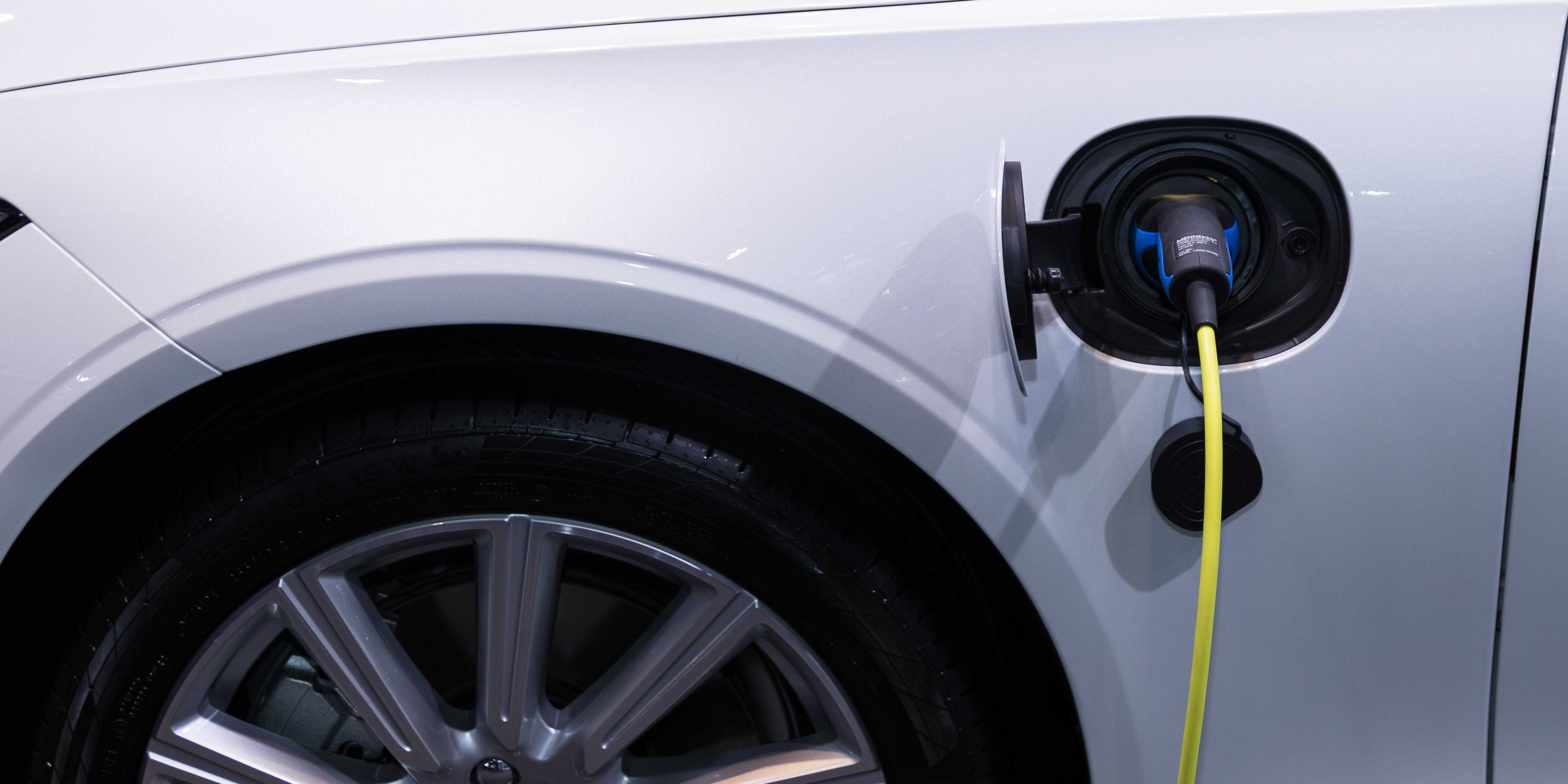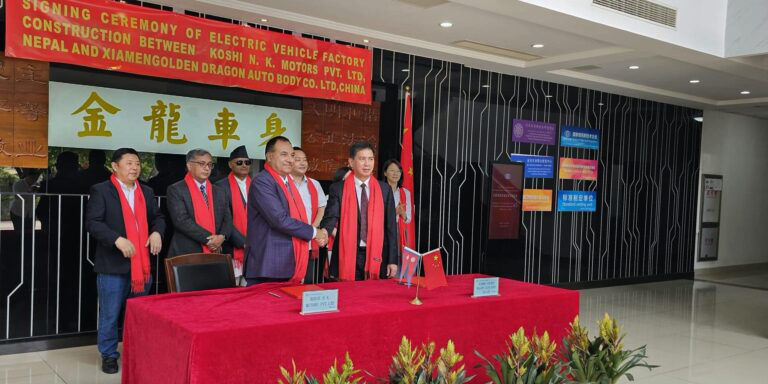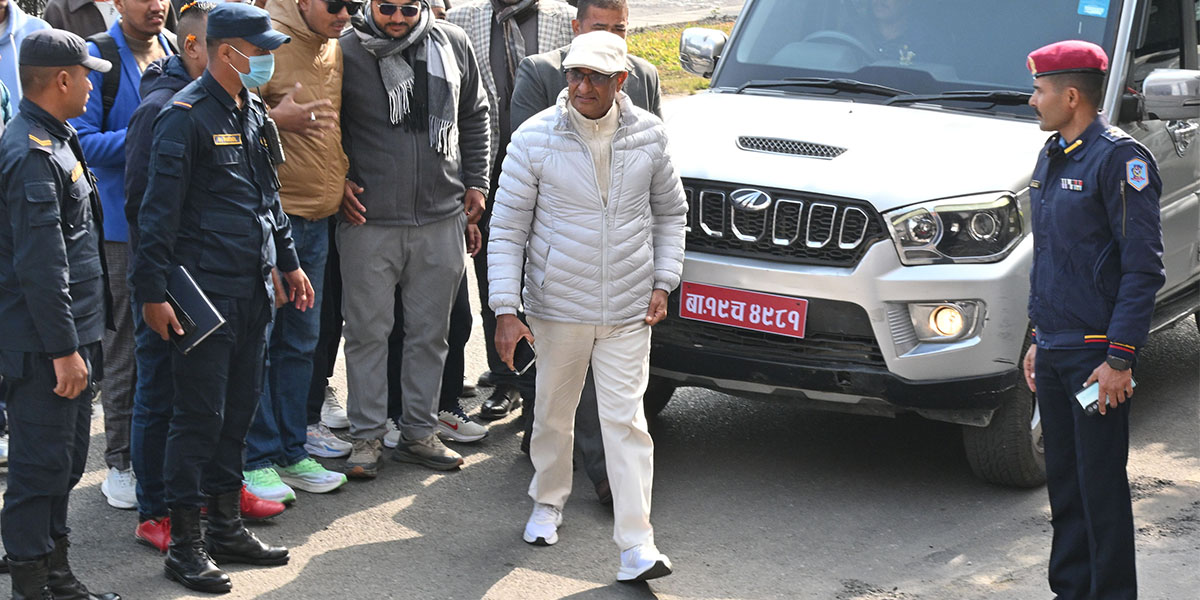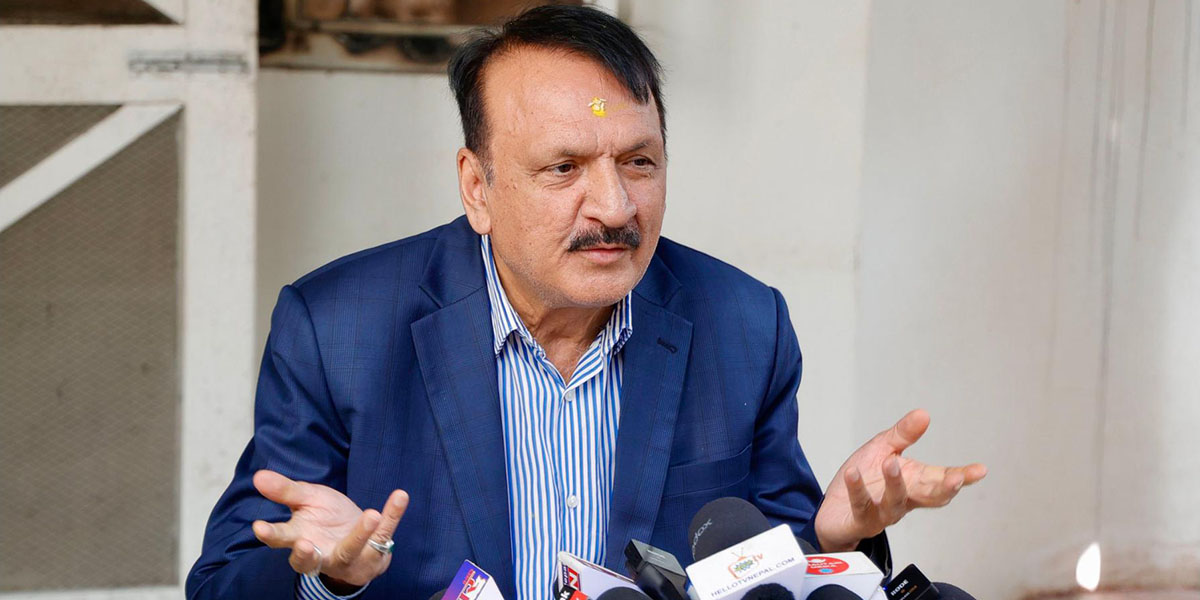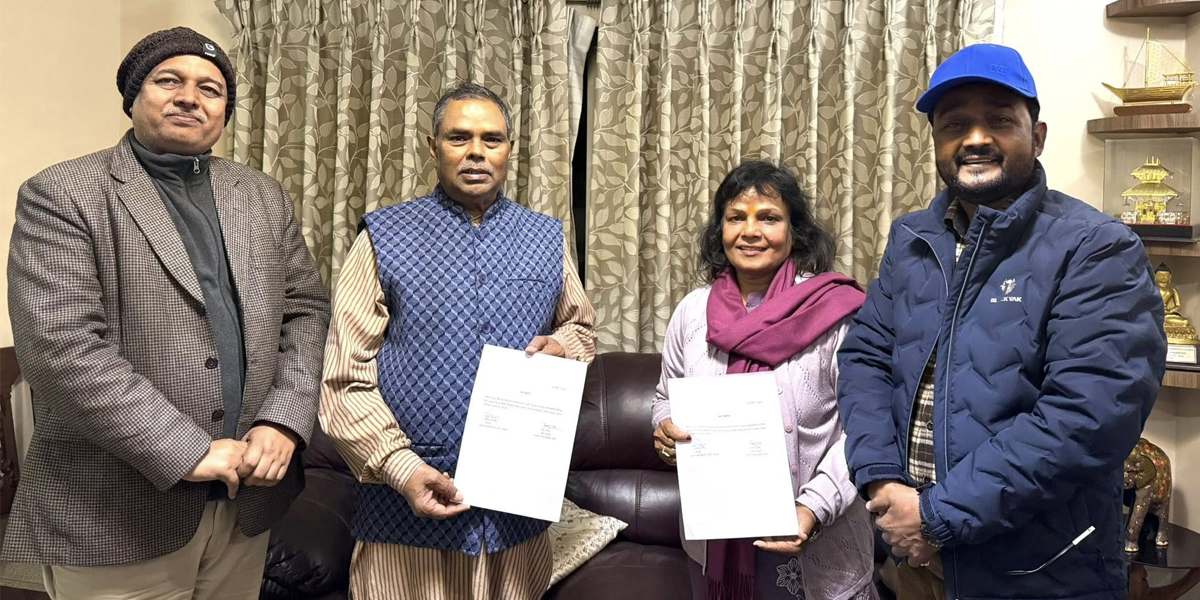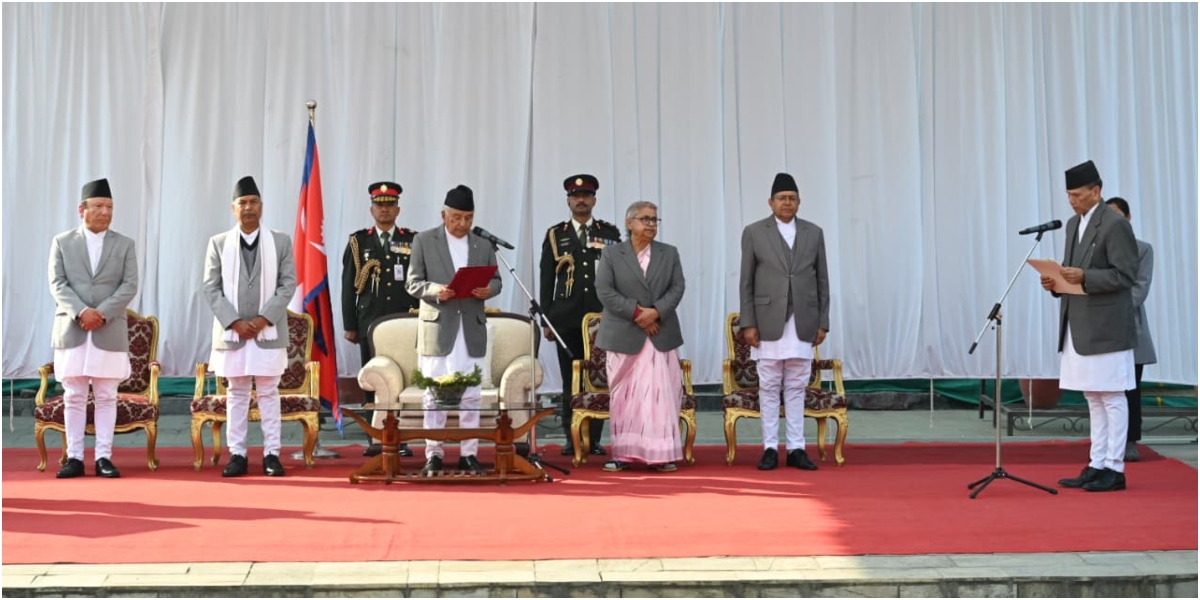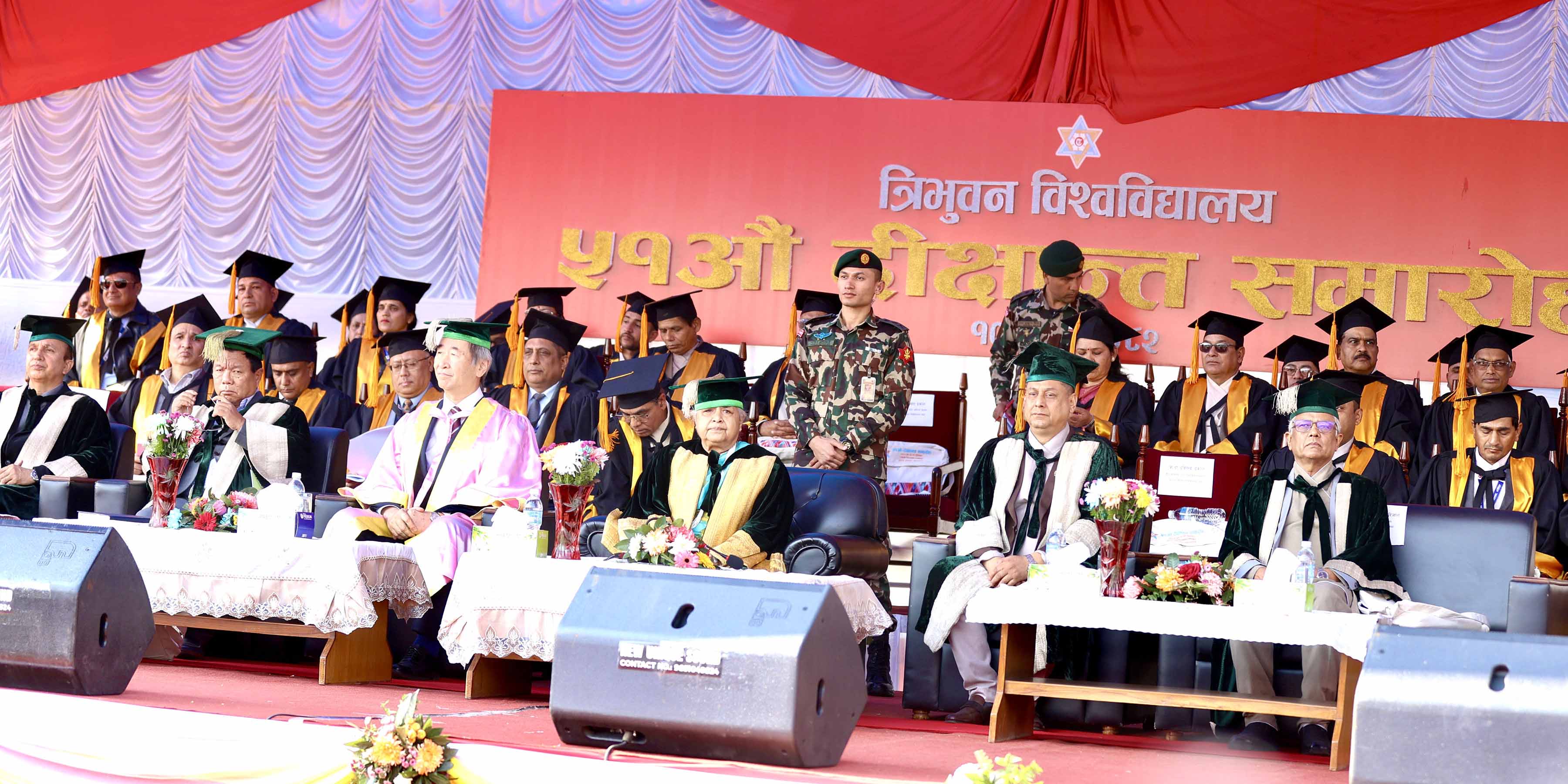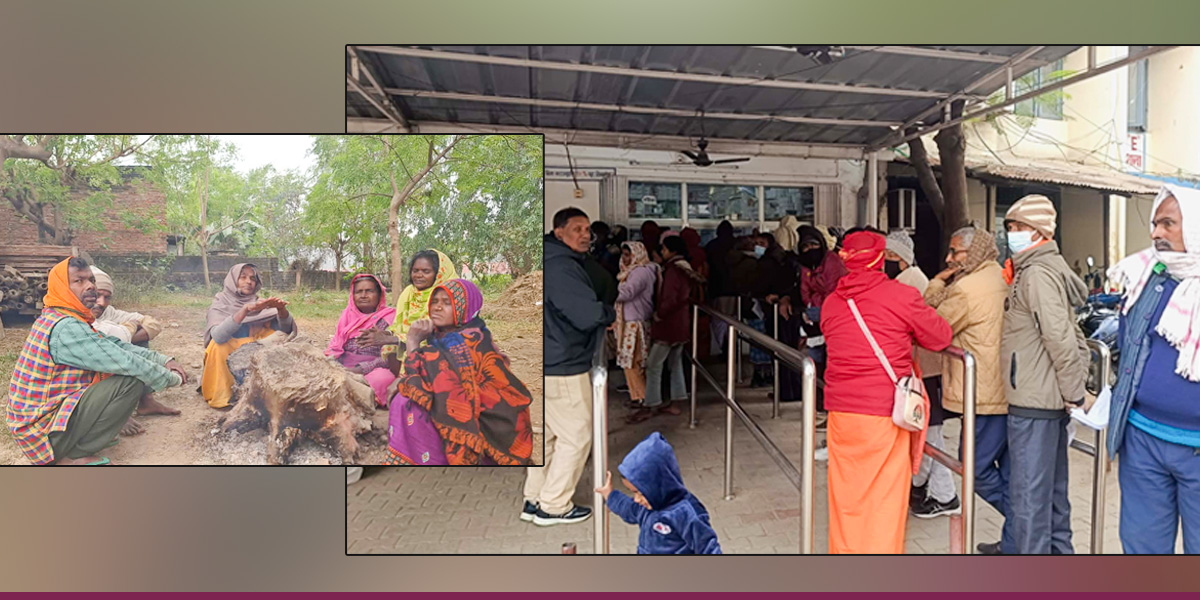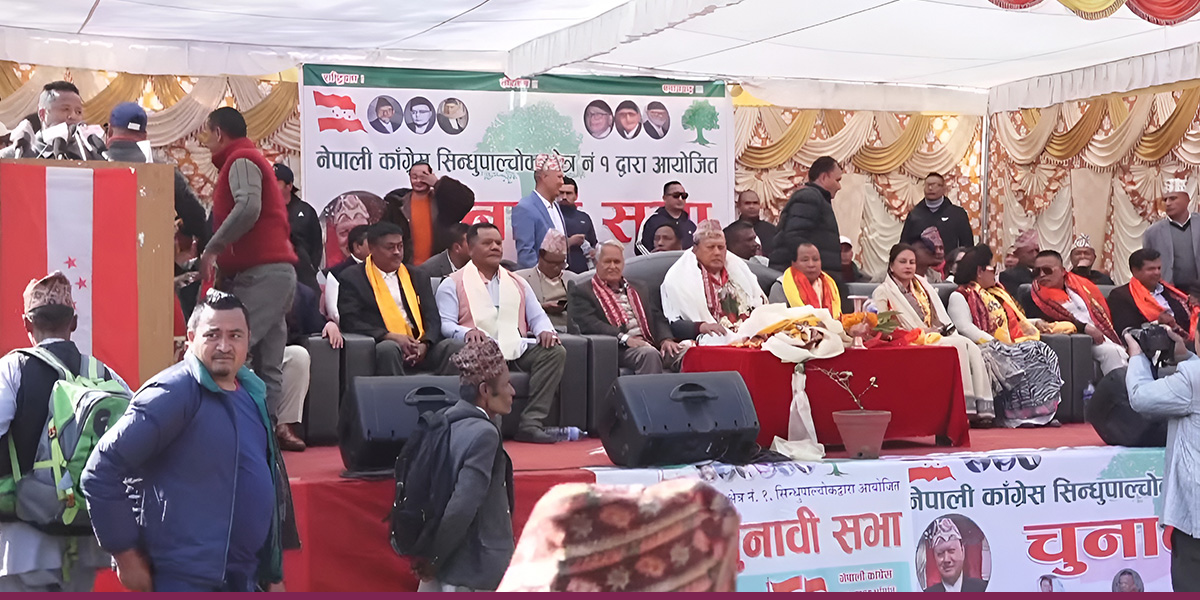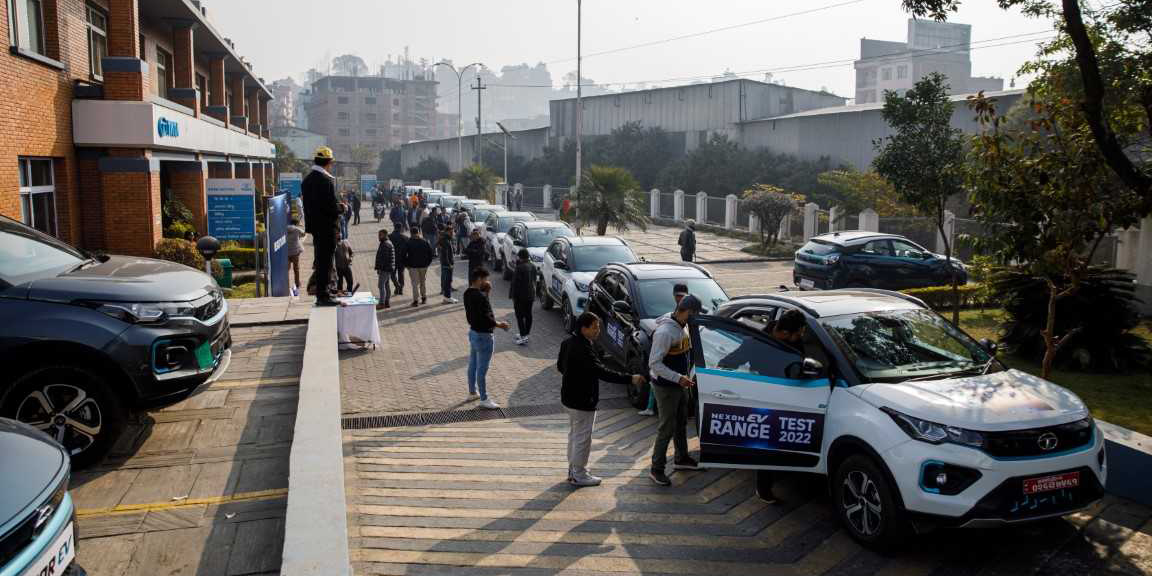 Electric SUVs line up at an event organized by Sipradi Trading - the authorized distributor of Tata Motors for Nepal - in this recent photo.
Electric SUVs line up at an event organized by Sipradi Trading - the authorized distributor of Tata Motors for Nepal - in this recent photo.
KATHMANDU: The government has implemented policies to increase domestic electricity consumption, decrease the import of petroleum products, and promote green energy in order to address the growing trade deficit. To encourage the use of electric vehicles, the government has implemented tax incentives for electric vehicles in comparison to those powered by fossil fuels.
The low operating cost and easy financing options of electric vehicles have made them increasingly popular among Nepalis. A study conducted by the Nepal Electricity Authority (NEA) found that the cost per kilometer for electric cars is 70 paisa, 80 paisa for electric SUVs, 90 paisa for electric microbuses, and Rs 1.20 for electric buses.
According to the Department of Customs, by the end of December 2022, a total of 1,749 units of electric jeeps, vans, and other vehicles have been imported into Nepal. This number has increased significantly from the fiscal year 2021/22 when 1,807 units of electric vehicles were imported. In comparison, only 261 units were imported in 2020/21 and 575 units in 2019/20.
India is the top supplier of electric vehicles to Nepal, followed by China, the United States, Indonesia, and South Korea. As of September 2022, a total of 1,280 electric vehicles have been imported from India. According to data from the Department of Customs, 241 electric vehicles have been imported from China, 221 from South Korea, 4 from the United States, and 3 from Indonesia.
Despite the growing adoption of electric vehicles, infrastructure, including charging stations, is insufficient, says Dhruba Thapa, president of NADA Automobiles Association Nepal.
Despite the growing number of electric vehicles on Nepali roads, there is a lack of physical infrastructure, particularly charging stations. Additionally, Nepal does not yet have any electric vehicle-friendly roads. While private sector electric vehicle sellers and the Nepal Electricity Authority are working to build charging stations, it may not be sufficient to meet the growing demand.
Dhruba Thapa, president of NADA Automobiles Association Nepal, said that despite the growing adoption of electric vehicles, infrastructure, including charging stations, is insufficient. “The shift to electric vehicles could happen faster if there are good roads with adequate charging stations,” he added.
In addition to the lack of infrastructure, the after-sales service for electric vehicles is also lacking. Many authorized dealers lack technicians who specialize in EVs. Furthermore, despite government tax subsidies, electric vehicles are still quite expensive compared to their fossil fuel counterparts. The cost of EVs can be up to Rs 300,000 to Rs 1 million more than similar vehicles that run on fossil fuels.
Five years to build charging stations!
The Nepal Electricity Authority (NEA) is building 51 charging stations at 32 locations across the country with a loan assistance of Rs 380 million from the Asian Development Bank (ADB). The project started in 2016/17.
However, the project remains incomplete even after five years after its inception. NEA’s plan is to build a charging station every 60 to 80 kilometers on major highways. Seven charging stations are under construction in the Kathmandu Valley.
Meanwhile, NEA has issued new regulations, the Electricity Distribution Regulations, 2022, which allow private residents, businesses, and organizations to install charging stations.


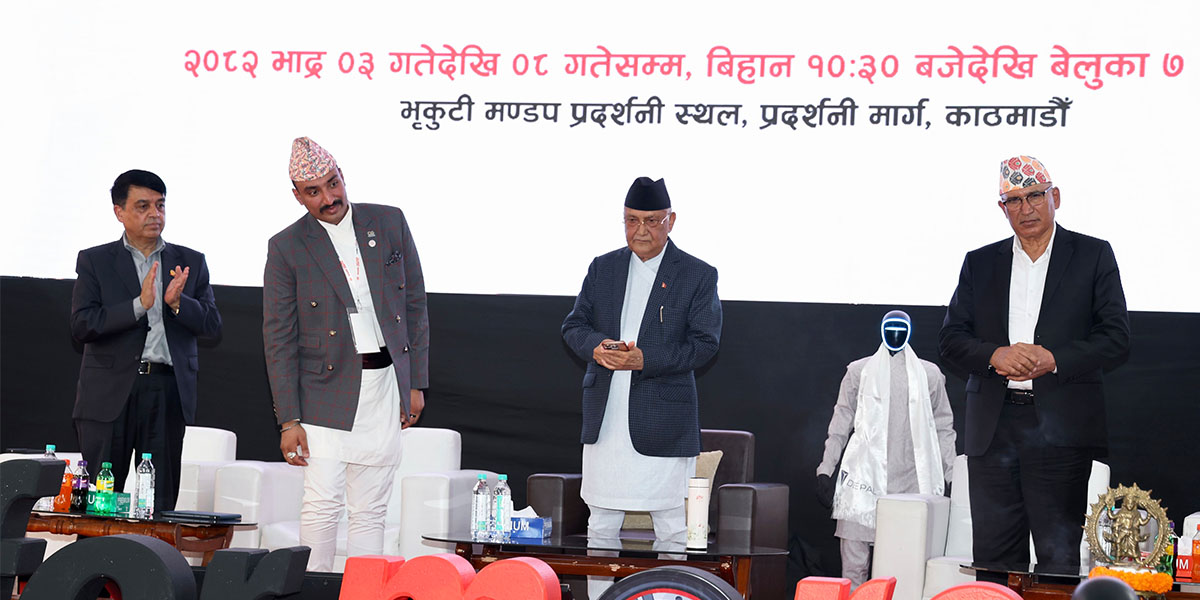
![These are the seven EVs launched at NAIMA show [With Pictures]](https://en.himalpress.com/wp-content/uploads/2025/08/NAIMA-Inauguration.jpg)
